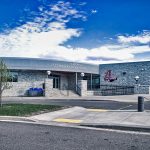High-performing organizations ensure employees are connected to the work they do. They also know that in order to achieve this, survey data must be collected, shared, and reflected upon. Surveys aren’t just about getting the information as they also provide an opportunity to go back to that employee or customer to make sure they understand that the leadership team is taking action. Rolling out results prompts conversation—conversations that provide opportunities for team building and  continuous improvement.
continuous improvement.
AnneMarie Eades, VP and CIO at the University of West Georgia (UWG), recognizes that using Survey Results Rollout to receive feedback from employees, take action, and then measure the results of those actions boosts organizational morale.
Collecting the Data
Eades was a key figure in transforming the front lines through Results Rollout at UWG. In this effort, she and other leaders at the university were compelled to take action when survey results validated challenges known to be a reality on the front line: the Information Technology Services (ITS) team answering the phones to assist university faculty and staff members.
In the Fall of 2016, we worked with Studer Education to get a survey released to the community. Now, there were only 79 participants. That was very intentional on our part because we knew that the faculty, in large part, did not interact with the ITS team on a day-to-day basis. However, we knew that the folks who did interact with the ITS team were their administrators and the leadership team.
In measuring timeliness, operations, attitude, accuracy, and accessibility, UWG found that attitude was their lowest scoring survey item.
Some of the comments people were saying when they contacted us in their time of need were disturbing to hear. A few of the comments we received included, ‘I have long since stopped contacting the service desk when I have a problem—I just work around it, Every time I contact the service desk, I feel like I just woke someone up, and I feel like it’s such a bother every time I contact them—as if I interrupted their tweeting or Facebooking.’
Rolling Out Results
After targeting areas of need, the survey results were rolled out to the leadership team and the service desk staff. Feedback was collected from all team members including highlighted areas working well and suggestions for solutions in areas that needed improvement.
When we reviewed the results with the leadership team and the service desk staff, we took an approach to highlight what we really did well because it wasn’t all bad. We challenged the leadership team to put together an action plan not only to strengthen what we were doing well, but also to address the areas in need of improvement. The last piece of this involved holding the leadership team accountable. The timing was such that we were entering into a new performance evaluation cycle. It’s not that the leadership was being rated poorly as a result of the survey results, but the survey results confirmed areas that were already being examined—areas that we knew historically needed to be addressed. Now was the opportunity to address those from a performance management standpoint, and that’s what we did.
Addressing the Challenge
UWG’s leadership team developed a plan to improve scores and establish a culture of service excellence. They understand the power of connecting employees back to purpose. With this in mind, they created an all-day homegrown client services retreat.
They really put some time and effort in facilitating and delivering it on their own. That really meant a lot to the participants.
Here is what this retreat looked like:
Team Building: The retreat consisted of multiple team building exercises including ice-breakers and games. Service team members worked together to address the question, “Why does customer service matter?” From this, they determined the top four traits of good customer service: empathy (the ability to connect), listening (focusing only on what the client is saying), compassion (caring about the well-being on another), and respect (a reflection on yourself rather than the client). The team also discussed best practices of conflict management and how to most effectively approach difficult customers.
Defining Values: The service excellence team worked together to develop a list of values aligned to the existing values of the university, as well as answering the question, “What does service excellence look like?” As a team, they decided service excellence is comprised of achievement, caring, collaboration, inclusivity, innovation, integrity, sustainability, and wisdom.
Outcomes
Spring 2017 Service Excellence Survey results indicated a relationship between the retreat and the perceptions of leadership and staff. Scores improved in 4 out of the 5 categories, including timeliness, attitude, accuracy, and accessibility. On a 5-point scale, attitude increased from 3.21 to 3.53.
I was really proud of the leadership team. Their efforts, from an overall morale-boost standpoint, really went a long way. We still have work ahead of us, but we are off to a very good start.
These improved scores are encouraging and truly demonstrate the impact Results Rollout has on organizational perceptions and improvement. After rolling out results at your organization, how are you taking action to ensure improvement?




